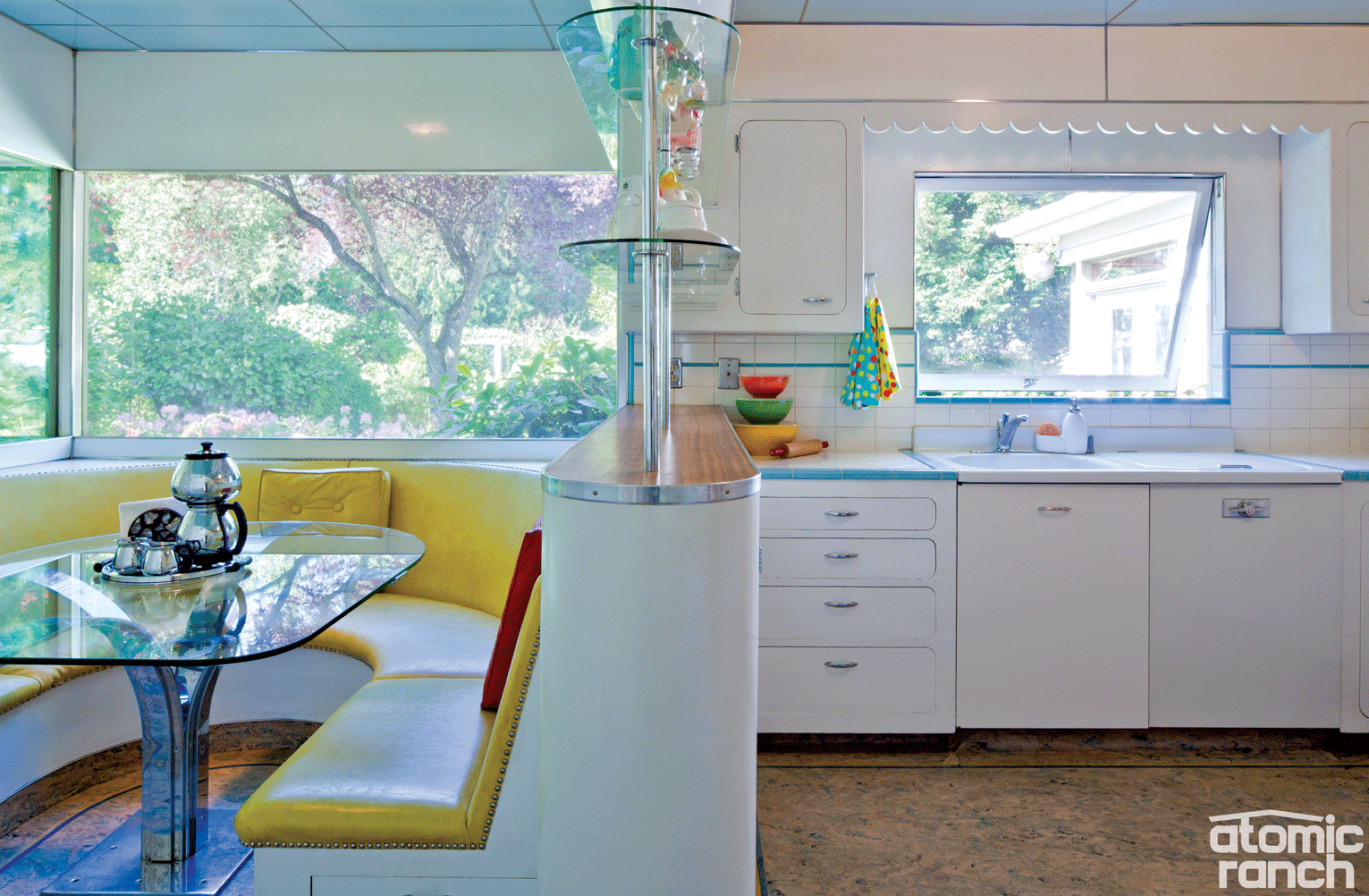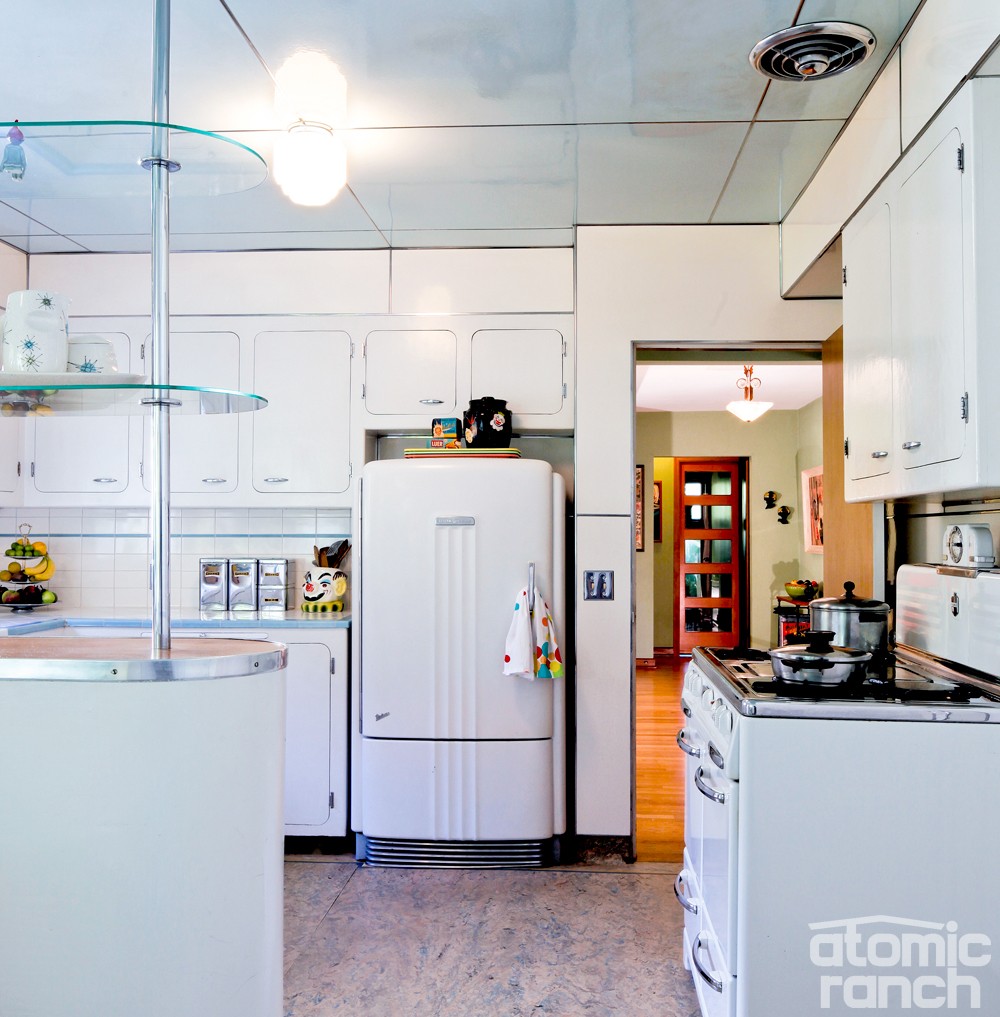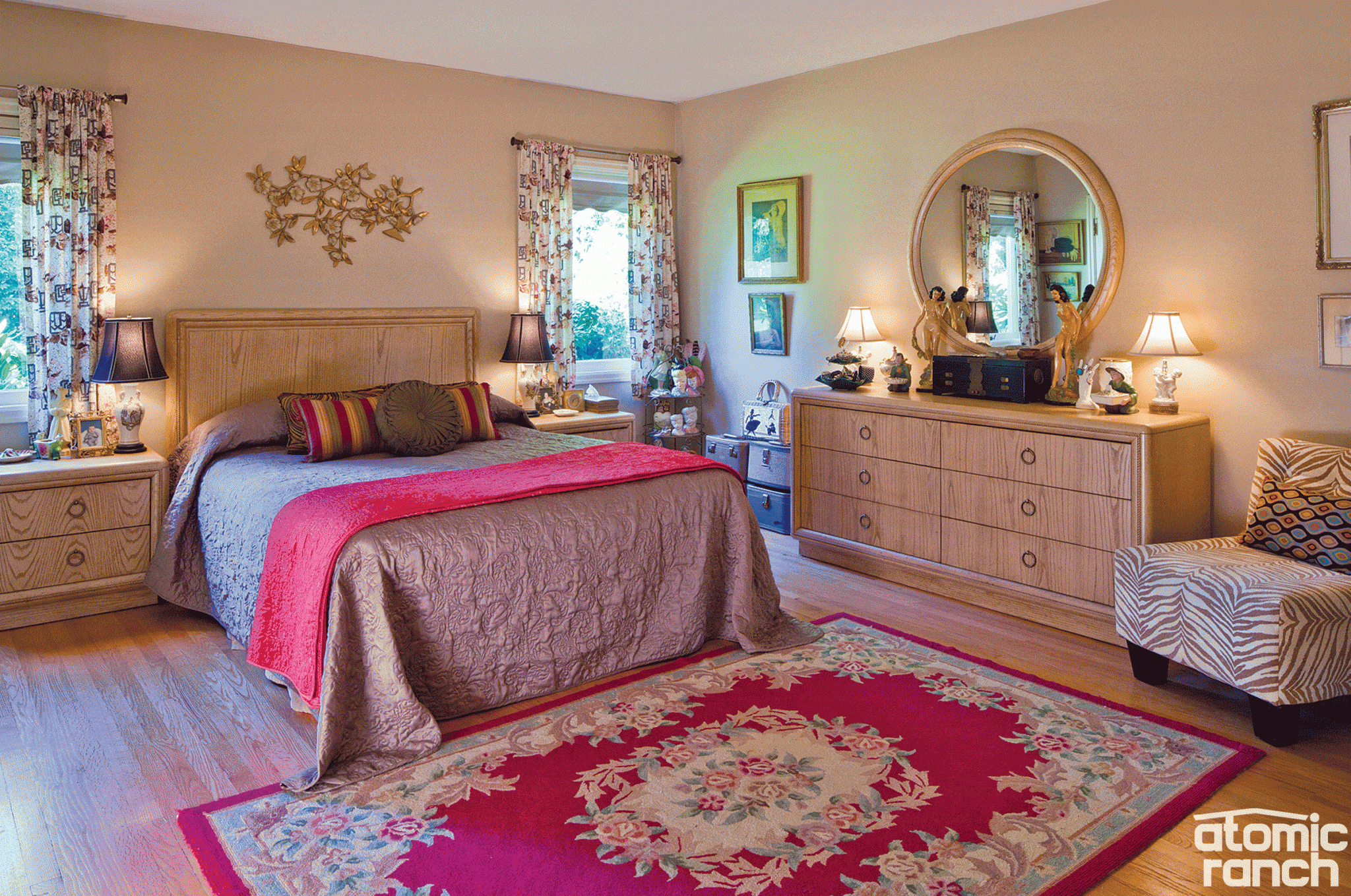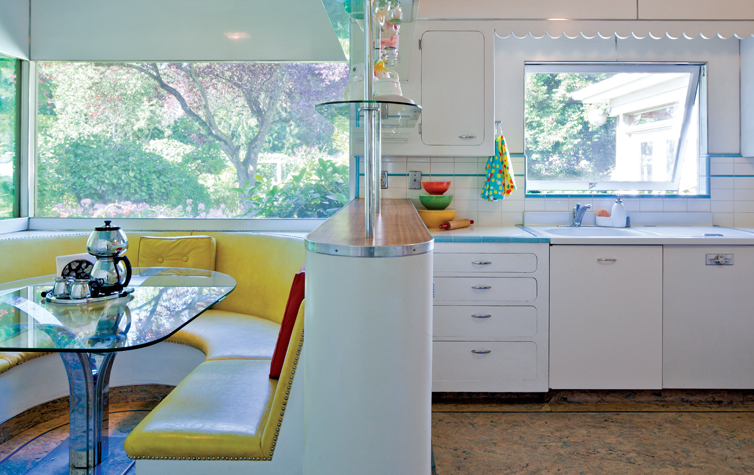
After uprooting their life in a vintage 1930s abode, the Broms found a ranch in Portland recognized for its historic midcentury value (Part 1), only to lose the home to another prospective buyer. The couple had settled on another option, but as fate would have it, their dismal circumstances took a turn for better at the very last second.
“We found one that would suffice, and the moment I called the listing agent to acknowledge acceptance of the verbal offer, my other line rang, only to find out that the Brentwood house was BOM [back on market]. It was too perfect, and we dropped everything and jumped on it.”
The listing agent’s photos—including a computer rendering of the kitchen updated with stain- less steel appliances, Nelson bubble lamps and gray upholstery on the banquette—garnered online chatter when posted on retrorenovation.com. “I was really happy to be able to share that the right buyer had, indeed, purchased the home and would absolutely maintain it, maybe even better it,” Starelli says.

The Broms had lived in Saint Louis, in Austin (coincidentally, down the street from the Rollingwood house on page 12) for 15 years, and in a ’30s home in Washington, D.C., moves dictated by Bobby’s Air Force career. But Marti, an Americana recording artist, had embraced retro from the time she worked in a vintage clothing shop 35 years ago.
“When I was a teenager, I honestly thought there was nobody else on earth who liked this stuff,” she says. “Fast forward all these years, I’m thrust into the world of rockabilly, and I’m like, Wait a minute; all these girls have vintage clothes and they like the stuff I like! My taste then was the same as it is now,” she continues with a laugh. “I’m very eclectic; I try to rein it in a little bit, especially in this house. It was such a particular style that it made me edit a lot of my stuff.”

For many years Marti worked as a department store visual merchandiser—designing window displays and furniture vignettes, dressing mannequins—and she annually visits Austin, where she decorates clients’ homes for the holidays. But she still loves best working with and repurposing found retro objects. “I always have jungle-y living rooms. The house we rented in D.C. was built in the ’30s and it looked like a big lodge inside. There, I kind of went with ‘African Lodge,’ and it worked,” she says.
“Our ’60s Stenger house in Austin was a place where we could showcase all of our collections. I had a circus room that had clown stuff, and my rattan furniture was in there. We had another room that was just records with big circus banners; we don’t have a place to hang those here. My kitchen was bright green with yellow cabinets and Day of the Dead collectibles. In this kitchen I had to tone it down, and I can’t hang anything on the walls,” Marti explains.
Vintage Hoarders: Midcentury Modern Edition
A new house means a new design concept. Learn how Marti and Bobby’s respective collections have been adapted to the space in Part 3.












